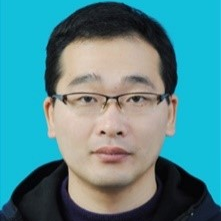Uncertainty Propagation of Complex Engineering Structures/Systems
A special issue of Buildings (ISSN 2075-5309). This special issue belongs to the section "Building Structures".
Deadline for manuscript submissions: closed (31 January 2023) | Viewed by 14875
Special Issue Editors
Interests: structural reliability; random stability; stochastic dynamics; uncertainty quantification and propagation; performance-based earthquake engineering
Interests: random vibration; earthquake engineering; structural control; fractional dynamic systems
Special Issue Information
Dear Colleagues,
Uncertainties have long been observed and are well recognized in structural properties and external loads, especially in the case of disastrous loads, e.g., seismic ground motions. In this regard, almost every engineering structure/system and its external loadings are characterized by uncertainties when tackling response prediction and system identification. Since the complexity of nonlinear models of engineering structures/systems continues to grow, the uncertainty propagation of complex engineering structures/systems is of critical importance to ensure global safety, which remains one of the major challenges in structural and mechanical engineering. The nonlinear behaviors of the considered structures/systems further increase the relevant difficulties in this area. Therefore, it is necessary to employ advanced methodologies and tools, which lead to efficient solutions for investigating the behavior of complex engineering structures with consideration of uncertainties.
This Special Issue aims to deliver and discuss recent advances and emerging cross-disciplinary approaches related to uncertainty propagation of complex engineering structures/systems. Specific contributions related to both fundamental research and engineering applications are welcome.
Dr. Jun Xu
Prof. Dr. Fan Kong
Dr. Ding Wang
Guest Editors
Manuscript Submission Information
Manuscripts should be submitted online at www.mdpi.com by registering and logging in to this website. Once you are registered, click here to go to the submission form. Manuscripts can be submitted until the deadline. All submissions that pass pre-check are peer-reviewed. Accepted papers will be published continuously in the journal (as soon as accepted) and will be listed together on the special issue website. Research articles, review articles as well as short communications are invited. For planned papers, a title and short abstract (about 100 words) can be sent to the Editorial Office for announcement on this website.
Submitted manuscripts should not have been published previously, nor be under consideration for publication elsewhere (except conference proceedings papers). All manuscripts are thoroughly refereed through a single-blind peer-review process. A guide for authors and other relevant information for submission of manuscripts is available on the Instructions for Authors page. Buildings is an international peer-reviewed open access monthly journal published by MDPI.
Please visit the Instructions for Authors page before submitting a manuscript. The Article Processing Charge (APC) for publication in this open access journal is 2600 CHF (Swiss Francs). Submitted papers should be well formatted and use good English. Authors may use MDPI's English editing service prior to publication or during author revisions.
Keywords
- numerical simulation of large-scale engineering structures
- rational modelling of two-types of uncertainties
- new theories and methods for uncertainty propagation
- sensitivity analysis of complex engineering structures
- structural reliability analysis
- stochastic dynamics of engineering structures
- reliability-based optimal design of engineering structures
- engineering applications of uncertainty-based methods
- hazard analysis of stochastic engineering excitations
- risk assessment of complex engineering/social systems







